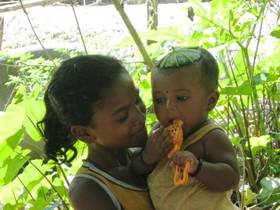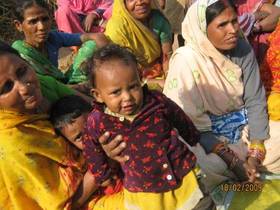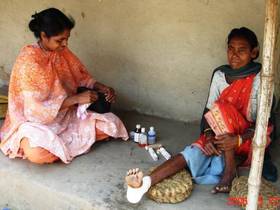Maternal & Infant Health in Nepal
Background
Nepal has some of the worst figures in the world for women and children dying in childbirth, lack of contraceptive use and specific vitamin related malnutrition. Maternal and infant mortality are linked to young pregnancies, lack of antenatal care, no trained assistant at delivery and poor post natal follow up. HIV and other sexually transmitted infections are increasing rapidly. 85% of Nepal is rural and these areas have much worse health indicators than urban areas. This is due to poverty and poor access to health facilities.
Mother & Child Care in Sirsia, Nepal
Sister Smitha says: "when we visit the villages and meet mothers along with their babies, we advise them as to how they should care for their babies. We encourage them to get benefits and vaccination from PHC (Primary Health Center). We distribute nutritious food for malnourished babies and mothers."
Importance for Rural Development
Maternal & infant health is crucial for development. Healthy mothers give birth to healthy children. Informed mothers care more competent for the wellbeing of their offspring. Therefore women need to be educated about the basics of hygiene, health care and nutrition. The support and training of village women is an effective and sustainable approach in a country, where women have little decision making power in their individual life. In addition, in a country as poorly equipped with health services as Nepal capacity building and support of existing structures is crucial.



